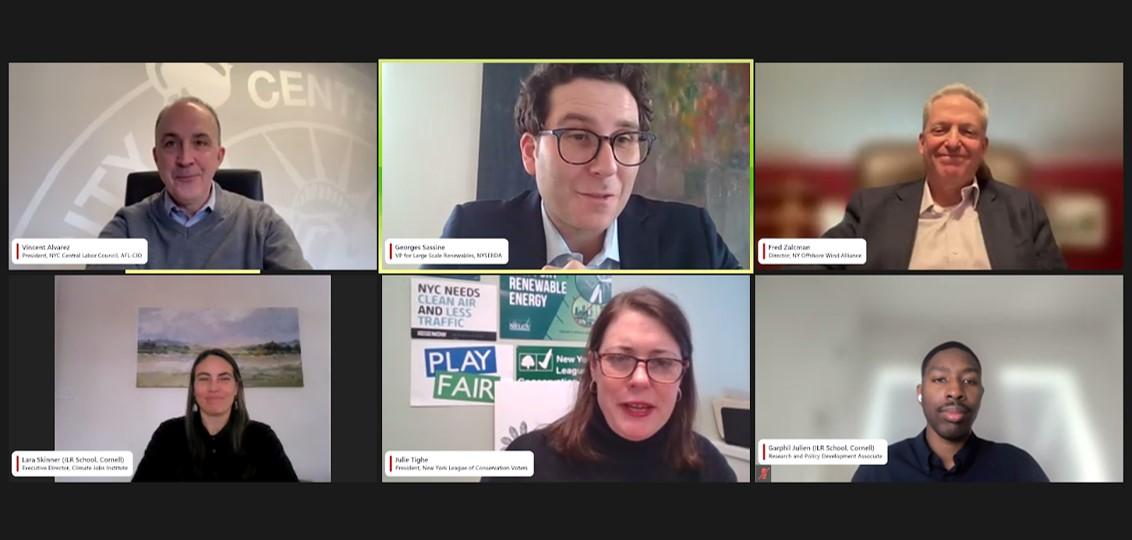
Climate Jobs Institute's Offshore Wind Webinar Launches New CAROW Series
“Rather than throwing in the towel on offshore wind (OSW), states have doubled down, beginning with New York state,” said Fred Zalcman, showing “a rededication and recommitment to the future of OSW in the U.S.”

Zalcman was one of several experts who joined the Feb. 13 webinar, The Future of Offshore Wind in New York State. The webinar inaugurated a new monthly series hosted by the Center for Applied Research on Work (CAROW) that brings Cornell ILR’s applied research on work together with policy and practice.
“This work by the Climate Jobs Institute (CJI) is the perfect illustration of applied research that informs state policies, union strategies and practical tools for organizations and workers,” said Ariel Avgar, director of CAROW and senior associate dean for Outreach and Sponsored Research.
“We are really excited to convene this discussion,” said Lara Skinner, executive director of CJI. “We see this as one of our core missions: convening conversations between labor, the environmental movement, industry and government partners to advance our climate jobs and equity goals.”
OSW power is essential to meeting New York’s climate goals. It is a renewable energy resource that has the potential to lower electricity costs, create high-quality careers and significantly reduce greenhouse gas emissions. Nevertheless, obstacles remain to the transition towards OSW’s cleaner, more equitable future.
“We’ve seen some significant project attrition over the last year or so owing to this perfect storm of events: supply chain bottlenecks, inflationary pressures, high interest rates, steel prices are through the roof,” said Zalcman, director of the New York Offshore Wind Alliance.
“It’s very rare to have these major global shocks back-to-back, and I think this is why we are seeing inflation and these constraints,” said Georges Sassine, vice president for Large Scale Renewables at New York State Research and Development Authority (NYSERDA).
In 2023, the U.S. OSW industry encountered numerous project cancellations due to these ‘black swan events.’ However, the experts agreed that this was a temporary jolt.
“The industry is doing well and moving forward quickly in other parts of the world, and I think these are temporary headwinds we are facing,” said Skinner. “New York has done a good job of responding swiftly to the current challenges and making sure we move forward.”
“We have set very ambitious targets for the OSW industry, upwards of 40 gigawatts,” said Zalcman. “That’s really critical for the industry because it sends the market signal that there’s gonna be a significant and sustainable market here in the U.S.”
The success of offshore wind will be measured not only by the quantity and quality of jobs it creates but also by whether these jobs go to frontline workers and communities.
“The first and foremost problem we have here is a public health problem,” said Julie Tighe, president of the New York League of Conservation Voters. “Far too often, fossil fuel power plants are located in or adjacent to disadvantaged communities that are really overburdened by pollution.”
“We have to get this transition right,” said Vincent Alvarez, president of the New York City Central Labor Council, AFL-CIO. “There will be a direct correlation between us building out the clean energy sector the right way – in a way that will help preserve and create good jobs – and making sure that those jobs are afforded to folks who have been left behind.”
A recording of the Feb. 13 webinar is available here. For information on future webinars, please visit the CAROW website.



